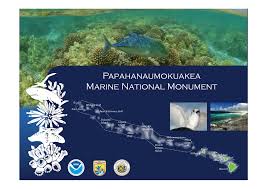Overview
Although much of the area of the ocean floor is unexplored, scientists have been able to find features that are common to all areas. The landforms that make up the ocean floor are different from those that make up the continents. A huge mountain range called the Mid-Oceanic Ridge divides sections of the oceans, deep valleys and trenches form as a result of geologic processes, and vast abyssal plains extend in all directions.
The Unexplored Ocean Floor
When planes crash over open ocean, their exact location is difficult to pinpoint. Satellites cannot penetrate sea water with radar, although radar measurements of the surface of ocean waves can detect large-scale differences. Sonar soundings produce detailed maps, but those are difficult and time-consuming to make. More precise measurements from cameras on submersible devices have also been conducted over even smaller areas of the ocean floor. Some submersibles have even gone into the deepest trenches in the Pacific Ocean. However, the surfaces of Mars and the dark side of the Moon have been mapped more than many areas on the ocean floor.
The Ocean Crust
The ocean crust consists of different types of rocks than the crust found on the continents. Most of the crust material is made up of dense basalt that sinks to the ocean floor, covering the mantle. The lowest level of basalt is between 5 and 7 kilometers thick. It has horizontal layers created while magma is cooling. A layer of a special type of basalt called “pillow basalt” covers that. Cooling magma forms large spherical structures from the action of seawater. Sediment made up of clay, decaying organisms, and other remnants of sea life covers the basalt, especially on the flat abyssal plains. Some layers of sediment and rocks have been recovered from cores drilled in the ocean floor.
The Mid-Oceanic Ridge
The Mid-Oceanic Ridge is a huge mountain range that runs underwater through the Atlantic, Pacific, and Indian Oceans. It is larger than any mountain range above ground, with peaks that rise higher than mountain chains on the continents. Ridges are geologically active, with volcanoes erupting basaltic magma and forming new ocean crust. Transform faults create jagged areas all along the mountain chain.
Valleys, Trenches, and Plains
Rift valleys form in the boundaries between tectonic plates. The deepest valleys are long and narrow, called trenches. At its deepest point, the Challenger Deep, the Marianas Trench is over 10,990 m below sea level. In contrast, abyssal plains are extremely flat regions covered over by layers of thick sediment.
Interested in science tutoring services? Learn more about how we are assisting thousands of students each academic year.
SchoolTutoring Academy is the premier educational services company for K-12 and college students. We offer tutoring programs for students in K-12, AP classes, and college. To learn more about how we help parents and students in Oneida, NY: visit Tutoring in Oneida, NY





